Cartier vs Rolex: Comparing Two Iconic Luxury Watch Brands
Cartier and Rolex stand as among the world's most esteemed luxury watch brands. Each boasts a deep-rooted history and delivers outstanding quality in their work, yet they also feature unique characteristics. In this piece, we'll examine Cartier and Rolex side by side in terms of their brand reputation, popularity, design, materials, performance, price, and resale value. By the end, you'll gain a clearer insight into which brand aligns best with your preferences and needs.
Brand Reputation and Heritage
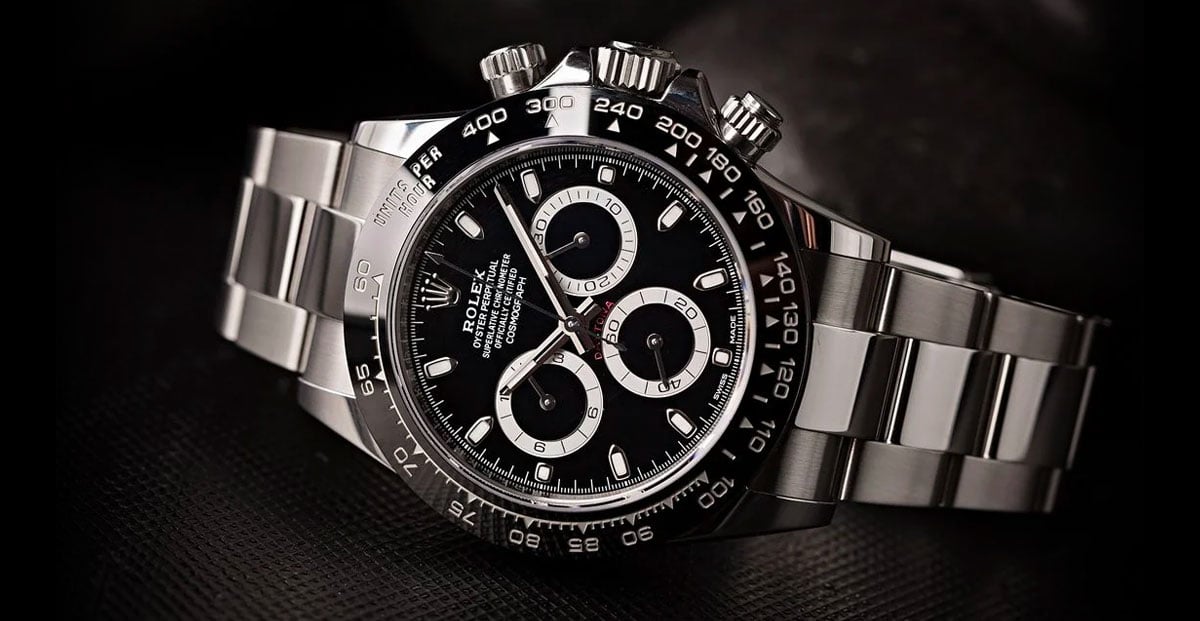
Rolex and Cartier have both established themselves as leading luxury watch brands, each with a unique reputation and heritage. Rolex watches are famous for their accuracy, durability, and prestige, while Cartier watches are celebrated for their elegance, artistry, and ties to royalty. Let's examine in detail how these two companies have established their reputations over time.
Rolex: Known for Precision, Durability, and Prestige
Rolex has established itself as a globally renowned and esteemed watch brand. Established in 1905, the Swiss high-end timepiece manufacturer is known for its association with accuracy, dependability, and longevity for more than a hundred years.
Rolex timepieces are crafted to endure harsh environments, ranging from deep-sea diving to mountain climbing. Rolex's dedication to excellence and creativity has secured its position on the wrists of adventurers, athletes, and successful individuals alike. Rolex's iconic models, such as the Submariner, GMT-Master, and Daytona, have become legendary for their performance and rugged dependability.
Cartier: Known for Elegance, Artistry, and Royal Connections
Founded in 1847, Cartier is renowned for its exquisite craftsmanship, elegant designs, and rich history. has consistently been a preferred choice for nobility and famous figures over many years, due to its enduring elegance and craftsmanship.
Cartier's timepieces are not merely instruments for telling time; they are masterpieces. The brand's iconic designs, such as the Cartier Tank and Cartier Santos, have become classics in the world of luxury watches. The brand’s legacy is firmly established in its dedication to crafting exquisite, inventive, and timeless watches.
Popularity
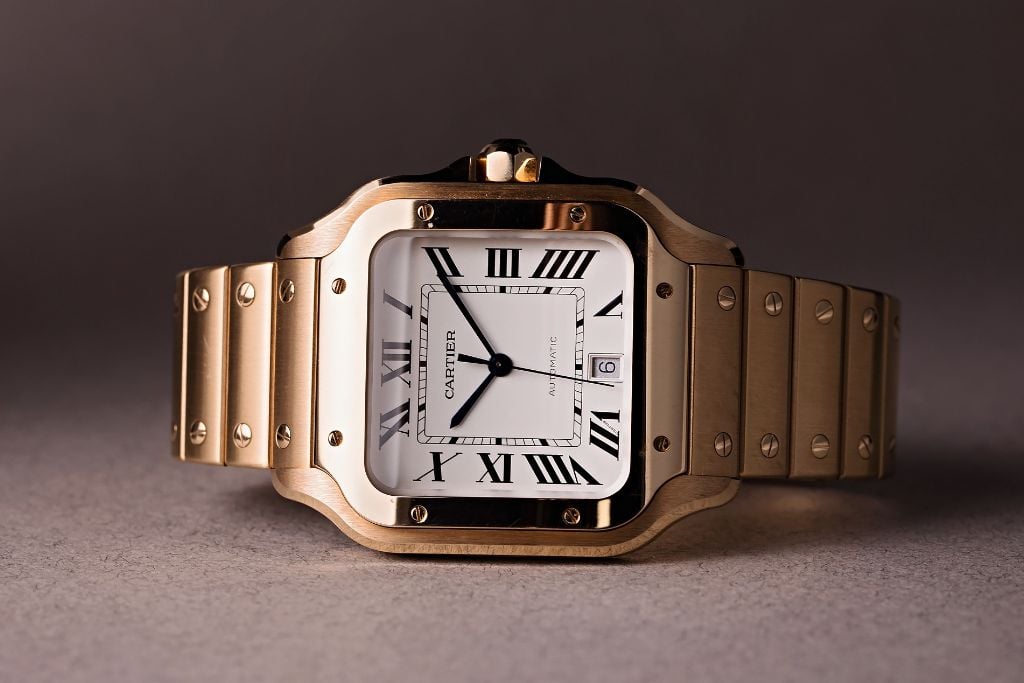
Rolex and Cartier are both highly desired luxury watches, but they have achieved their popularity in different ways. Rolex is widely acknowledged as a sign of global success and accomplishment, whereas Cartier has built a devoted group of customers who value its classic beauty and refinement. In this section, we’ll examine the factors that have led to the lasting appeal of each brand.
Rolex: Globally Recognized Luxury Watch Brand
Rolex is one of the most globally recognized luxury watch brands, with a name that is synonymous with success, achievement, and prestige. The brand's iconic crown logo is instantly recognizable, and its watches are worn by countless influential figures across various industries.
Rolex's popularity stems from its consistency in delivering high-quality, reliable, and stylish timepieces. The brand's watches are not only sought-after by watch enthusiasts but also by those who appreciate the status and prestige associated with owning and wearing a Rolex watch.
Cartier: Prestigious Brand with a Loyal Luxury Following
Cartier has a dedicated and loyal following among luxury enthusiasts who appreciate the brand's rich history, elegant designs, and exceptional craftsmanship. The brand's prestige is rooted in its royal connections and its reputation for creating jewelry and timepieces of the highest quality.
Although Cartier might not enjoy the worldwide acclaim that Rolex does, it remains a brand that is highly esteemed and in high demand among individuals who appreciate luxury, elegance, and uniqueness. Cartier's appeal is also boosted by its involvement in the realm of couture fashion and its partnerships with famous fashion designers.
Celebrity Endorsements and Cultural Influence
Both Rolex and Cartier have a strong presence in popular culture, with numerous celebrity endorsements and appearances in films, music videos, and other media. Rolex has been worn by the likes of James Bond, while Cartier has adorned the wrists of celebrities and style icons such as Grace Kelly, Jackie Kennedy, and Princess Diana.
The cultural influence of these brands extends beyond celebrity endorsements. Owning and wearing a Rolex or a Cartier watch is often a signifier of success, refinement, and style. The brands' iconic status and cultural significance contribute to their enduring popularity and desirability.
Watch Styles and Design
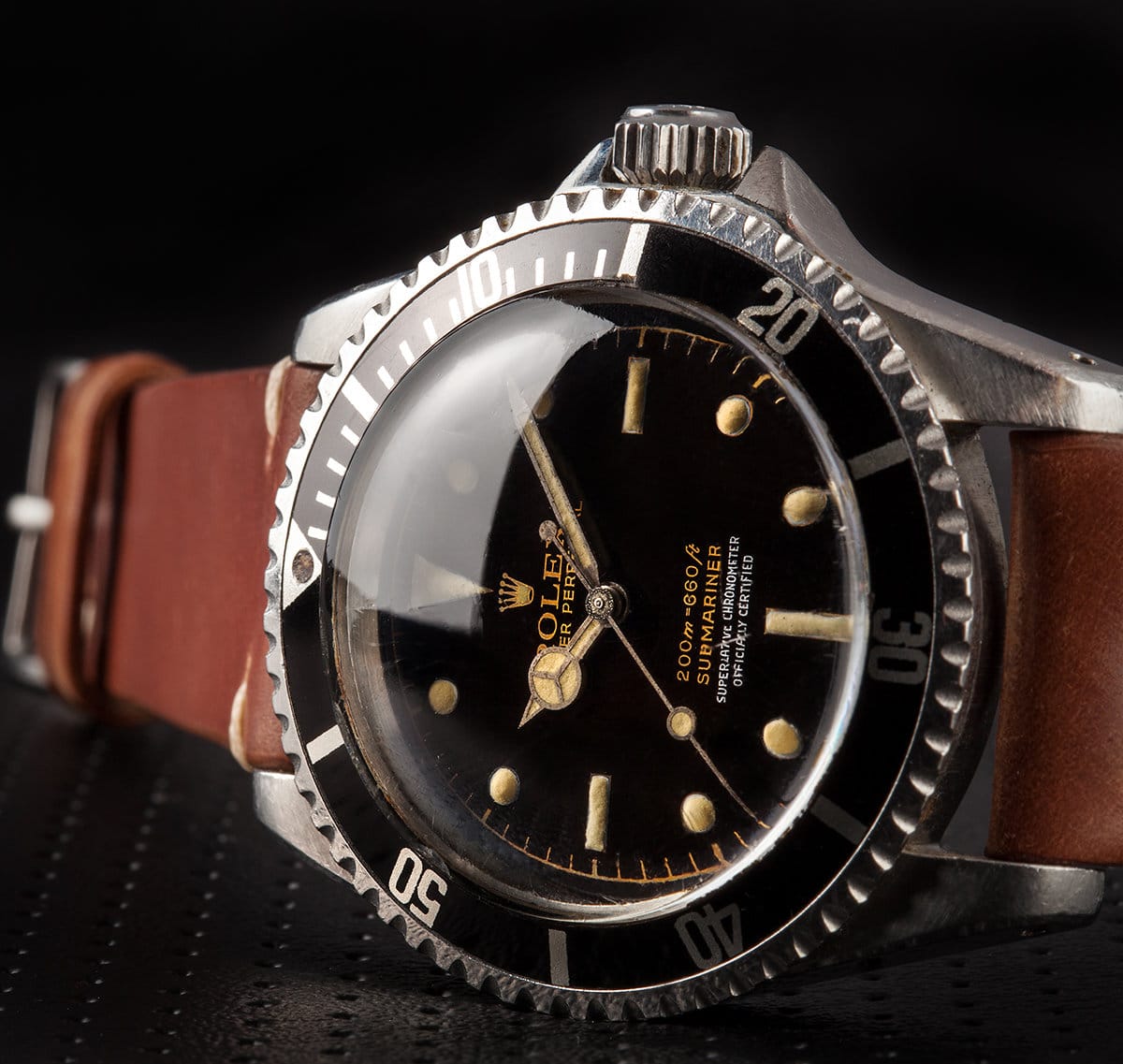
A major distinction between Rolex and Cartier lies in how they approach the design of their watches. Rolex is recognized for its sporty, practical, and timeless designs, whereas Cartier is renowned for its refined, classy, and artistic creations. In this section, we'll go into detail regarding the famous models from each brand and analyze their distinct design principles.
Rolex: Sporty, Functional, and Classic Designs
Rolex is known for its sporty, highly functional, and classic watch designs. The company's most recognizable vehicles, like the Submariner, Daytona, and GMT-Master, were initially created for specific purposes, such as diving, racing, and aviation.
These watches feature robust cases, easy-to-read dials, and practical complications, making them ideal for active lifestyles. However, Rolex's designs have also evolved to include more refined and elegant models, such as the Datejust and Day-Date, which are more suitable for formal occasions.
Cartier: Elegant, Sophisticated, and Artistic Designs
Cartier's watch designs are characterized by their elegance, sophistication, and artistic flair. The brand's iconic models, such as the Tank and Santos, feature distinctive shapes and clean lines that have become instantly recognizable.
Cartier's watches often incorporate precious metals, such as gold and platinum, and are adorned with high-quality leather straps or metal bracelets. The brand's attention to detail and use of intricate guilloche patterns, blue sword-shaped hands, and Roman numerals contribute to the timeless appeal of its designs.
Comparison of Iconic Models from Each Brand
When comparing iconic models from Rolex and Cartier, it's evident that each brand has its own unique design language. Rolex's Submariner, with its rotating bezel and rugged appearance, is a quintessential dive watch, while the Daytona, with its tachymeter scale and chronograph functions, is a favorite among racing enthusiasts.
In contrast, Cartier's Tank, with its rectangular case and minimalistic dial, is a timeless classic that exudes sophistication and elegance. The Santos, with its square case and exposed screws, was one of the first wristwatches designed for men and has since become an icon of the brand.
Craftsmanship and Materials
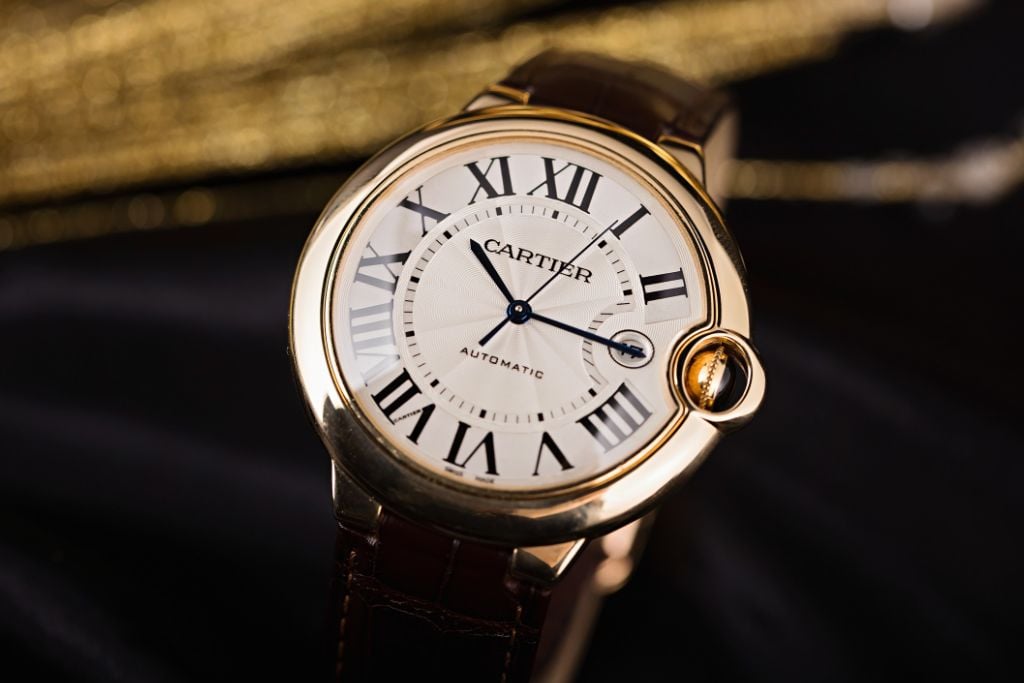
Rolex and Cartier are dedicated to utilizing the best materials and showcasing outstanding skill in making their watches. However, each brand has its own distinctive approach to choosing materials and the construction of their watches. In this section, we'll explore how Rolex and Cartier use high-quality materials and pay meticulous attention to detail to ensure the longevity and beauty of their timepieces.
Rolex: Use of High-Quality Materials
Rolex is famous for employing top-notch materials in making its timepieces. The company utilizes 904L stainless steel, known for its increased resistance to rust and its superior polish/shine than the standard 316L steel favored by other watch manufacturers.
Rolex also uses 18ct gold, including yellow, white, and Everose (a proprietary pink gold alloy), as well as platinum in its watch cases and bracelets. The brand's ceramic bezels, found on models like the Submariner and GMT-Master II, are both scratch-proof and resistant to fading.
Cartier: Emphasis on Precious Metals and Gemstones
Cartier is known for its use of precious metals and gemstones in its watch designs. The brand often employs 18ct gold, platinum, and sterling silver in its watch cases and bracelets, adding to the opulence of its watches.
Cartier also incorporates diamonds and other precious stones into its watch designs, often as accent pieces on the dial, bezel, or crown. The brand's mastery of gem-setting techniques, such as the invisible setting, showcases superior craftsmanship and attention to detail.
Attention to Detail and Quality Control Measures
Both Rolex and Cartier are committed to ensuring the highest level of quality in their watches. Rolex follows a stringent quality control process, with each watch undergoing numerous tests to ensure precision, water resistance, and overall durability.
Cartier also maintains strict quality standards, with each watch passing through multiple inspections before leaving the workshop. The brand's craftsmen pay meticulous attention to every detail, from the polish of the case to the stitching of the leather strap, to ensure that each timepiece meets Cartier's exacting standards.
Movement and Performance
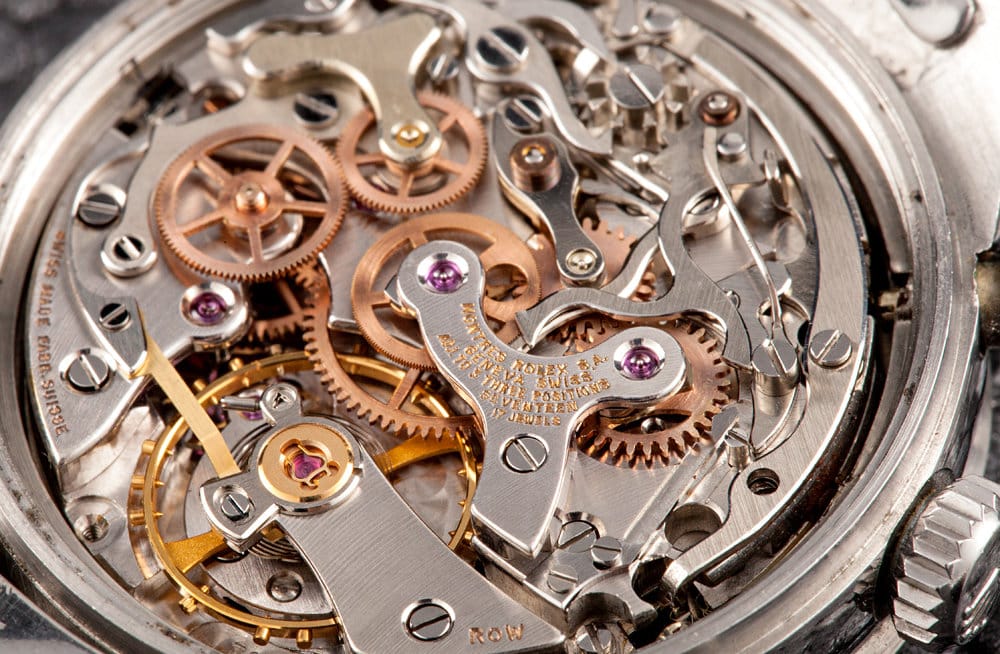
A high-end timepiece means so much more than just how it looks; it's also about how well and consistently it works. Rolex and Cartier are known for making watches with precise and trustworthy movements, but they have taken different approaches to achieve this. In this section, we'll compare the movements used by each brand and examine how they contribute to the overall performance of their watches.
Rolex: Accurate and Reliable In-House Mechanical Movements
Rolex is celebrated for its in-house mechanical movements, which are renowned for their accuracy and reliability. The brand's movements are designed, manufactured, and assembled entirely in-house, allowing for complete control over the quality and performance of its watches.
Rolex's movements are COSC-certified, meaning they have passed rigorous testing by the Swiss Official Chronometer Testing Institute and have demonstrated an accuracy of -4/+6 seconds per day. The brand's Superlative Chronometer certification, introduced in 2015, guarantees an even higher level of precision, with an accuracy of -2/+2 seconds per day.
Cartier: Mix of In-House and Third-Party Movements
Cartier uses a combination of in-house and third-party movements in its watches. The brand has developed several in-house movements, such as the 1904 MC and the 9452 MC, which are used in some of its higher-end models.
For other models, Cartier sources movements from respected Swiss manufacturers such as ETA and Jaeger-LeCoultre. While these movements may not be exclusive to Cartier, they are still of high quality and are known for their reliability and accuracy.
Comparison of Movement Types and Performance
When comparing the movements used by Rolex and Cartier, it's important to consider the level of vertical integration and the overall performance of the movements. Rolex's in-house movements are widely regarded as some of the best in the industry, offering exceptional accuracy and reliability.
Cartier's approach, which combines in-house and third-party movements, allows the brand to offer a wide range of watch styles and complications while maintaining a very high level of quality. While Cartier's movements may not have the same level of brand exclusivity as Rolex's, they are still highly respected and perform well within their respective categories.
Price

As high-end watch manufacturers, Rolex and Cartier are known for setting premium prices for their watches. Yet, the elements that determine the cost of each brand's watches can differ. In this part, we'll explore the price ranges of Rolex and Cartier watches and compare the factors that contribute to the value of their entry-level and high-end models.
Price Range and Factors Affecting Value
With most models starting at several thousand dollars and some rare or highly sought-after pieces fetching prices well into the six figures, Rolex watches are known for their high prices. The brand's entry-level models, such as the Oyster Perpetual and the Air-King, typically start at around $5,000.
Factors that can affect the value of a Rolex watch include the model, the materials used (such as gold or platinum), the complications (such as a chronograph or dual time zone), and the watch's rarity or historical significance. Vintage Rolex watches, especially those with special characteristics or a significant history of ownership, can be sold for more.
Cartier: Price Range and Factors Affecting Value
Cartier watches also occupy the higher end of the luxury watch price spectrum, with most models starting at several thousand dollars. The brand's entry-level watches, such as the Tank Solo and the Ronde Solo, typically start at around $2,500.
As with Rolex, the value of a Cartier watch is influenced by factors such as the model, materials used, complications, and rarity. Cartier's high jewelry watches, which feature intricate gem-setting and precious materials, can command prices in the hundreds of thousands of dollars.
Comparison of entry-level and high-end models from each brand
When looking at the basic models from Rolex and Cartier, it's clear that Rolex watches typically sell for more. This is partly because of Rolex's strong brand recognition, its use of in-house movements, and its reputation for producing watches that retain their value over time.
At the high end of the price spectrum, both companies present watches that demonstrate their expertise in watchmaking and high-end luxury workmanship. Rolex's priciest watches, like the Daytona Rainbow or the GMT-Master II Ice, feature precious gems and materials and can cost several hundred thousand dollars.
Cartier's high jewelry watches, such as the Panthère de Cartier or the Ballon Bleu de Cartier Tourbillon, also command premium prices due to their intricate designs, precious materials, and complex movements. Ultimately, the price of a high-end watch from either brand reflects the level of craftsmanship, exclusivity, and prestige associated with the piece.
Resale Value and Investment Potential
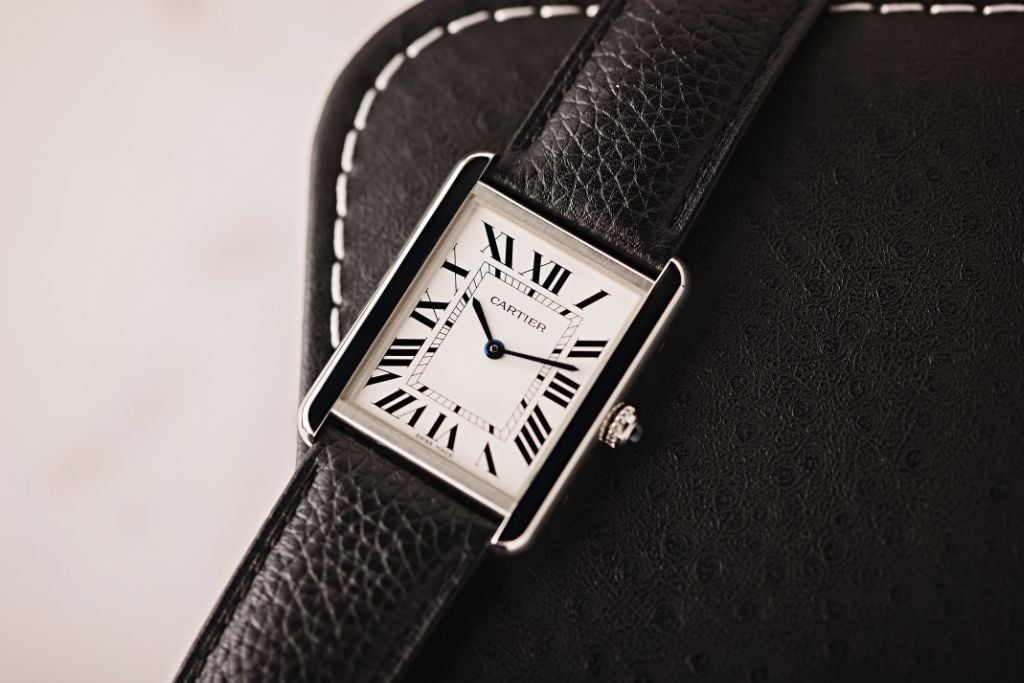
For many luxury watch buyers, the potential resale value and investment potential of a timepiece are important considerations. Both Rolex and Cartier are known for making watches that maintain their worth for a long time, but the elements that affect how much they can be sold for can vary. In this section, we'll compare the resale value and investment potential of Rolex and Cartier watches and explore the factors that can impact their long-term value.
Rolex: Strong Resale Value and Potential for Appreciation
Rolex watches are well-known for their strong resale value and potential for appreciation over time. Many Rolex models, particularly sports watches like the Submariner, GMT-Master, and Daytona, have a history of holding their value or even appreciating on the secondary market.
This strong resale value can be attributed to Rolex's enduring popularity, the quality and durability of its watches, and the brand's tight control over production and distribution. As a result, Rolex watches are often considered a relatively safe investment, as they are likely to retain a significant portion of their value over time.
Cartier: Stable Resale Value, Some Models Appreciate
Cartier watches generally have a stable resale value, although they may not experience the same level of appreciation as some Rolex models. However, certain Cartier watches, particularly rare or limited-edition pieces, have the potential to significantly appreciate over time.
The resale value of a Cartier watch is influenced by factors such as the model's popularity, the materials used, and the overall condition of the piece. While Cartier watches may not be considered as strong an investment as Rolex, they still offer a relatively stable value proposition for those looking to purchase a luxury timepiece.
Factors Influencing Resale Value
A variety of factors can influence the resale value of a Rolex or Cartier watch. Rarity is one of the most significant factors, as limited-edition or discontinued models often command higher prices on the secondary market due to their scarcity.
The watch's condition plays a vital role as well, with items in superb or flawless condition typically fetching higher prices than those with significant wear or damage. Regular maintenance, such as servicing and polishing, can also help to maintain the value of a watch over time.
Lastyly, market demand also plays a role in determining resale value. Models that are currently popular or in high demand among collectors are more likely to hold their value or appreciate, while less sought-after models may experience more modest resale prices.
Brand Philosophy and Customer Experience
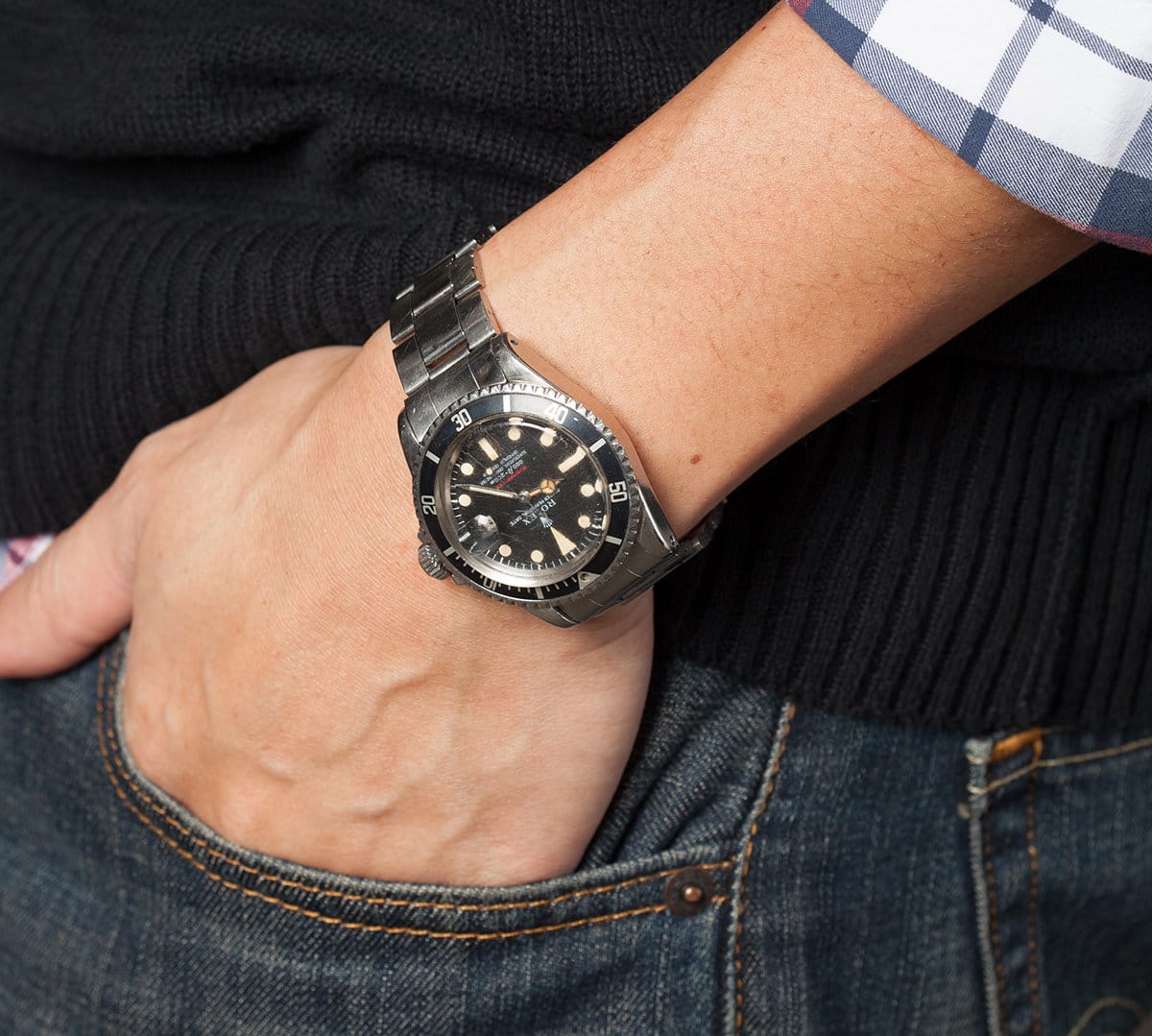
Beyond the watches themselves, the brand philosophy and customer experience offered by Rolex and Cartier play a significant role in shaping overall brand reputation and appeal. Each brand has a unique approach to defining luxury, with Rolex emphasizing performance and exclusivity, while Cartier focuses on refinement and personal style. In this section, we'll explore how these philosophies are reflected in the customer experience offered by each brand, including their warranty, after-sales support, and overall commitment to client satisfaction.
Rolex: Emphasis on Performance, Achievement, and Exclusivity
Rolex's brand philosophy is centered around the idea of performance, achievement, and exclusivity. The brand has a long history of producing watches that are designed to withstand extreme conditions and perform at the highest level, as evidenced by its associations with deep-sea diving, mountain climbing, and motorsports.
Rolex has also emphasized the idea of personal achievement and success, with its watches often being seen as a symbol of accomplishment and status. The brand maintains a sense of exclusivity by carefully controlling its production and distribution, ensuring that its watches are always in high demand.
Cartier: Focus on Luxury, Refinement, and Personal Style
Cartier's brand philosophy is rooted in the idea of luxury, refinement, and personal style. The brand is known for its elegant and sophisticated designs, which often feature precious materials and intricate details that showcase the skill and artistry of its craftsmen.
Cartier places a strong emphasis on individual style and self-expression, with its watches being seen as a reflection of the wearer's taste and personality. The brand's commitment to luxury is evident in every aspect of its products, from the quality of the materials they use to the level of service they provide to their customers.
Customer Service, Warranty, and After-Sales Support
Both Rolex and Cartier are committed to providing exceptional customer service and after-sales support to their clients. Rolex offers a two-year international warranty on all their watches, which covers manufacturing defects and ensures that the watch performs to the brand's exacting standards.
Cartier offers a two- to eight-year international limited warranty, depending on the specific model and the type of watch. This warranty covers manufacturing defects and ensures that the watch is functioning properly.
Both brands have a network of authorized service centers around the world, staffed by highly trained technicians who can handle repairs, maintenance, and servicing of their watches. These service centers use genuine parts and follow strict guidelines to ensure that each watch is restored to its original condition.
Additionally, Rolex and Cartier boutiques offer a range of after-sales services, such as cleaning, polishing, and strap replacement, to help clients maintain the beauty and functionality of their watches over time. By providing exceptional customer service and support, both brands aim to foster long-term relationships with their clients and ensure their satisfaction with their purchases.
So, Which One is the Winner: Rolex or Cartier?
Choosing between Rolex and Cartier ultimately comes down to your individual preferences, style, and needs. Both brands offer exceptional craftsmanship, luxurious designs, and a rich heritage, but they each have their own unique strengths and characteristics.
Rolex is often the choice for those who prioritize performance, durability, and strong resale value. The brand's watches are designed to withstand extreme conditions and are renowned for their accuracy and reliability. Rolex's strong brand recognition and history of value retention make it a popular choice among those who view their watch as an investment as well as a timepiece.
On the other hand, Cartier is the perfect choice for those who value elegance and artistic expression. The brand's watches are characterized by their sophisticated designs, precious materials, and attention to detail. Cartier's rich history and associations with royalty and high society also make it a symbol of luxury and prestige.
When making your decision, consider your personal style, the occasions on which you plan to wear the watch, and your overall budget. Both Rolex and Cartier offer a wide range of models at various price points, so there is likely to be a watch that suits your needs and preferences within each brand's collection.
Ultimately, whether you choose a Rolex or a Cartier, you can be assured that you are investing in a timepiece of exceptional quality and craftsmanship that will provide years of enjoyment and serve as a cherished symbol of your personal style and success.
With over two decades of experience in the luxury watch industry, the Bob's Watches Editorial Team stands at the forefront of watch expertise and insight. Our team, composed of seasoned watch enthusiasts, skilled horologists, and knowledgeable industry insiders, is dedicated to bringing you the latest and most accurate information in the world of luxury timepieces. We pride ourselves on our meticulous attention to detail and our unwavering commitment to authenticity. Our editorial content is a reflection of our passion for luxury watches and our dedication to providing our readers with comprehensive, unbiased, and up-to-date information. Our expertise spans a wide range of topics, including in-depth reviews of the latest models, historical retrospectives of iconic timepieces, and insightful analyses of market trends. We are also renowned for our detailed guides on watch maintenance and investment advice, making us a trusted resource for both seasoned collectors and new enthusiasts alike. As thought leaders in the watch industry, we understand the importance of staying ahead of the curve. That's why we continually update our knowledge and skills, ensuring that our readers receive the most current and relevant information. Whether you're seeking advice on your next luxury watch purchase or looking to deepen your understanding of watch craftsmanship, the Bob's Watches Editorial Team is here to guide you.